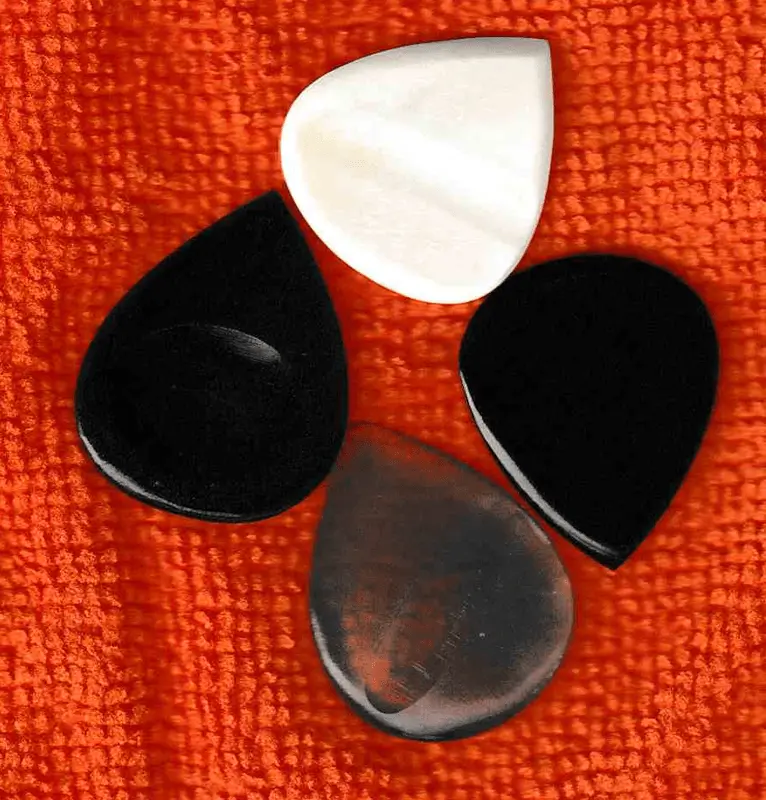Horn and bone picks are two types very similar and both are from animals.
Horn and Bone Picks

Horn and bone picks are thick.
They are usually at least 1.5 mm deep, often more. Horn and Bone’s picks have a finger divot in them or a groove or texture for gripping usually.
They are hard, some are like rocks, but don’t produce as strong a squeal as, say, glass or stone.
Horn and Bone picks are often warm sounding in the attack, and even a little gentle, yet still a little assertive.
If they have the right rounded tip, they will glide off well for strumming, but impart both brightness AND thickness to the tone. But the tone will be more thick than bright.
Horn and bone picks all vary when it comes to resonance:
I hope to write some more about these plectra, I’m investigating how they are harvested, selected, and formed. Check back in a few months, for now, however, read ahead…
Check my up-and-coming reviews on various models. There can be a scratchy sound to the resonance, and that might not be something you like, or, yeah, just what Doc ordered.
A great many dealers and makers sell these, but other than Etsy.com, you will want to search around for them. Beware, because their prices vary wildly at times.
Buffalo, Antelope, and other animal bones and horns are fashioned into picks.
I don’t yet know if there is much difference between different horns or bones, but there is also man-made bone, or Tusq for picks, a plastic, I will review them in future blog submissions.
They are warm in the hand and beautiful. Definitely try one or two. Some are very rare and others are common again due to recovery from over-harvesting such as Bison (Buffalo).
That’s it for natural substances and if you’ve been through the entire list here in the Materials Section, consider going on along to the Form Factors Section.
